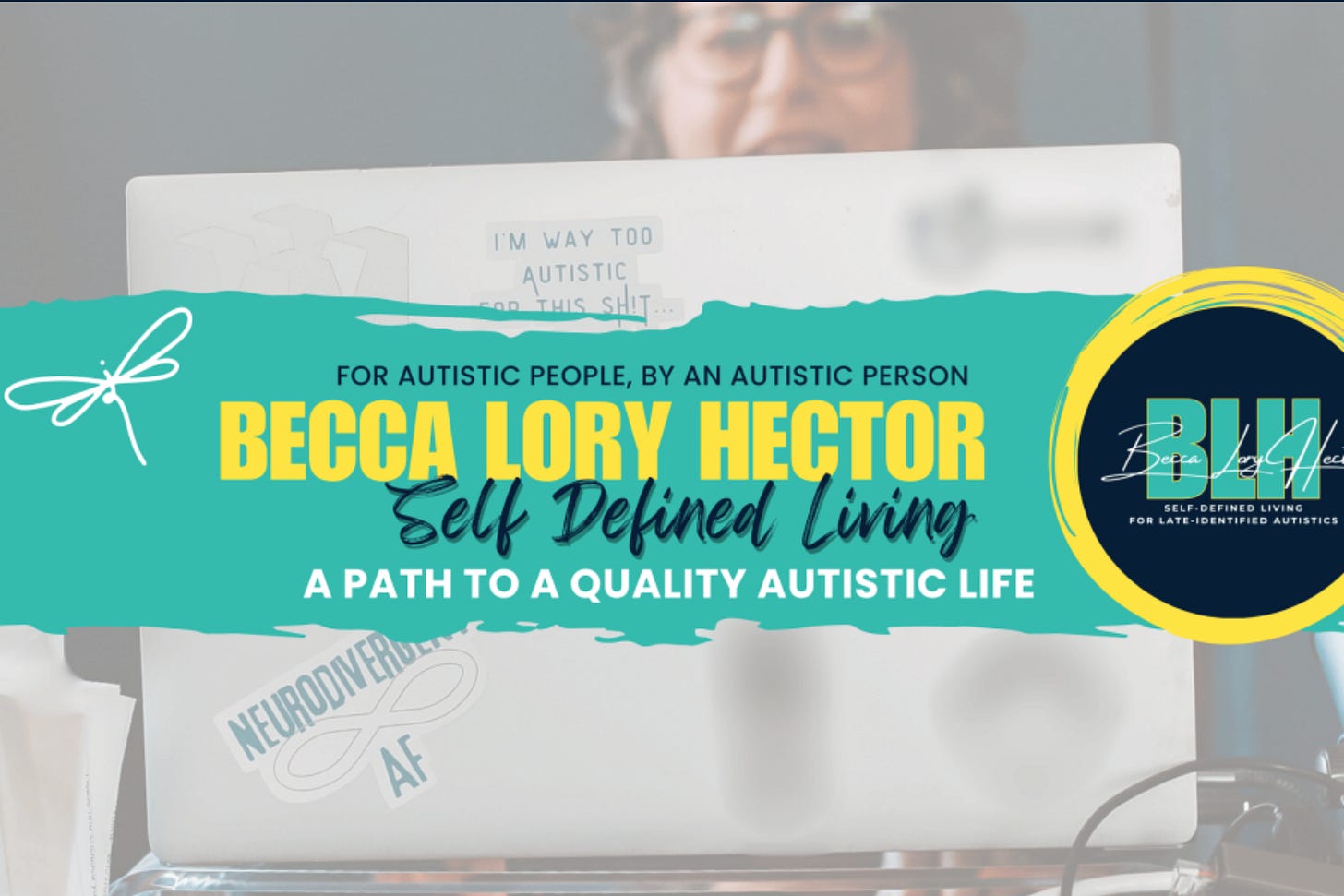What's a Low-Demand Lifestyle?
Read now (3 mins) | How Intentionally Reducing Stress Can Support Autistic Well-being
April 25, 2025
Nothing annoys me more than an acronym I don’t know. Military and medical people are legendary for using it. Jargon can be annoying if you aren’t in the inside. In Autistica, we have a lot of jargon too and sometimes I use it and don’t even realize it. Recently, I used the term low-demand lifestyle which I learned from friend of the pod, Becca Lory Hector.
A low-demand lifestyle is a way of intentionally structuring daily life to minimize the demands, pressures, and expectations that cause overwhelm, burnout, or anxiety. It involves actively reducing or removing both external demands (like social expectations, productivity norms, and rigid schedules) and internal demands (such as self-imposed pressures, masking, and perfectionism) to support autistic well-being.
This lifestyle emphasizes:
Autonomy and choice: The freedom to say "no" without guilt or justification.
Energy management: Proactively prioritizing rest, sensory regulation, and recovery time—not just reacting after burnout.
Reducing overwhelm: Limiting commitments, simplifying routines, and removing nonessential obligations.
Authenticity: Allowing yourself to openly live as autistic, minimizing the need to mask behaviors.
Gentle structure: Creating flexible routines and plans that provide stability without stress.
Think of it this way: whatever stresses you out places high demands on your nervous system. Your body produces cortisol and adrenaline to handle these stressors, helping you survive the moment—though often at a cost, such as a meltdown, shutdown, or exhaustion afterward as those hormones leave your system.
Imagine you're driving or riding in a car, and suddenly another vehicle pulls out in front of you. You experience that spike of panic, that sudden "OMG!" moment. That situation puts a high-demand on your nervous system. In a high-demand lifestyle, you're experiencing similar stressors continuously.
This could mean living in a house with lighting you hate, or taking on all the family cooking when the kitchen makes you anxious, or having a job as an Uber driver when bad drivers make you extremely mad.
What’s stressful for one person isn’t necessarily stressful for another. For instance, I have a weird vision thing. I can't pay attention to video. Looking at a movie or YouTube video puts me to sleep. Everything always looks super dark to me. I have to have my brightness at a billion to see anything, so if I go to a play and there are strobe lights, it literally has no effect on me at all - it's low-demand.
But my husband always has his brightness on 0 and if you walk into a room on Tuesday and then on Wednesday and the light dimmer has gone from 75% to 100% he will notice and lodge a complaint that the room is too bright. Strobe effects in a play will make him super tired after and I get to drive home. In a low-demand lifestyle, my husband would avoid strobe lights all together.
The first step in creating your own low-demand lifestyle is identifying what counts as high or low demand for you personally. This can be quite a journey! If you're unsure where to start, Becca Lory Hector's Self-Defined Living course is an excellent resource.
Once you've identified your stressors, the next step involves making significant changes—sometimes completely transforming your environment. Many people even move homes (often more than once) to get it just right. You might find yourself changing bedroom curtains, shower tiles, your car, your job, or even your child's school. It won't happen overnight; this process usually takes years. For me, initially it took about five years to make the cut over, but even now I am always optimizing as my sensory needs and special interests change.
Here's another practical example from my own life: I listen to podcasts all day, every day (currently playing: Decoder Ring - How "Chicken Soup" Sold Its Soul). My husband understandably dislikes constant podcast chatter, so I've created a simple solution. I bought five sets of inexpensive headphones and placed them strategically in plastic pockets attached to walls near the light switch in each main room (bedroom, office, kitchen, living room, and bathroom). Each pocket also has adapters for all my devices. This cost about $50 total but significantly improved my quality of life—and my husband's peace of mind.
Ultimately, creating a low-demand lifestyle is about consciously shaping an environment tailored to autistic needs rather than conforming to neurotypical standards.
Resources






